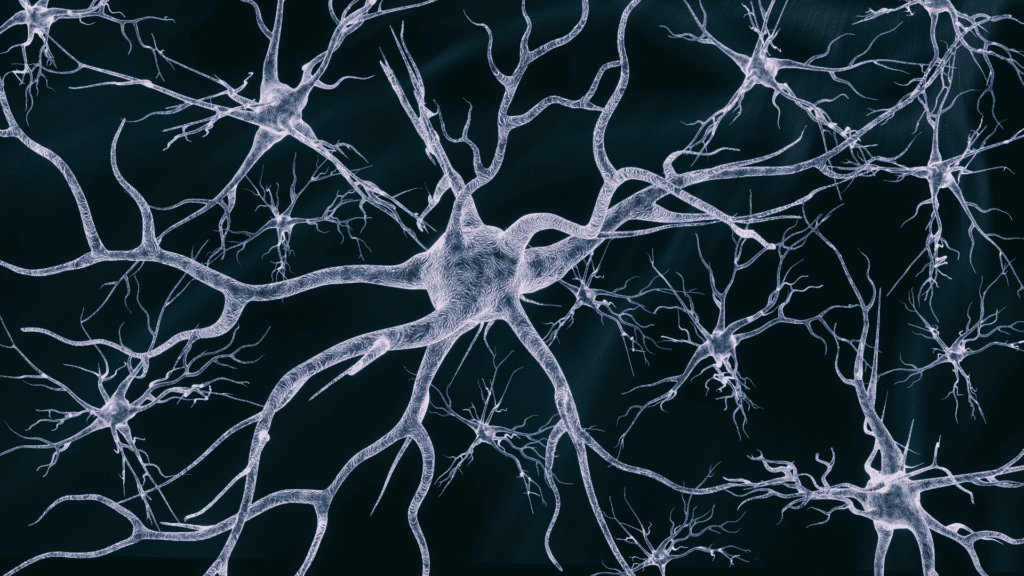The Epidemic of Disconnection
In today’s fast-paced world, many of us find ourselves stuck in autopilot mode—mindlessly going through the motions without truly engaging with life. You wake up, check your phone, rush to work, complete tasks, and repeat the same routine day after day. While these habits may feel efficient, they often leave us feeling disconnected from ourselves and the world around us. If you are feeling disconnected, it’s essential to recognize this state and take steps to reconnect. Ultimately, this sensation is a signal urging us to pause and reflect on our lives. This feeling of disconnection or experience is more common than you think.
This disconnection isn’t just a fleeting emotion; it’s a neurological state that can profoundly impact our mental health and overall well-being. Many of my clients ask me “What does feeling disconnected mean?” and I give them a very simple, yet thorough answer. It feels like you are experiencing a sense of detachment from yourself, others, or your environment, often accompanied by emotional numbness or a lack of fulfillment. Neuroscience reveals that prolonged cognitive disengagement can dull our emotional responses and make us feel stuck in a loop of unfulfilling routines. But the good news is that we have the power to break free.
If you find yourself experiencing a sense of detachment, it’s a sign that you need to address the underlying causes and reconnect with your surroundings and loved ones. Operating on autopilot does not have to be a permanent state; it can be transformed into an opportunity for growth.
In this blog, we’ll explore the neuroscience behind feeling a disconnection from ourselves and provide actionable strategies to help you reconnect with yourself and others. Whether you’re seeking greater joy or deeper meaning in life, these insights will empower you to reclaim intentional living.
What Is Autopilot Mode Anyway?
When you’re struggling to find emotional engagement, it’s important to explore new avenues that invite creativity and engagement.
Feeling disconnected can also stem from a lack of meaningful interactions with others.
Relying on instinctive behavior is a psychological state where habitual routines and subconscious processes override conscious decision-making. Think of it as your brain’s energy-saving setting: it prioritizes efficiency over awareness to handle repetitive tasks like brushing your teeth, driving a familiar route, or even scrolling through social media. While this mode is evolutionarily brilliant for conserving mental resources, it becomes problematic when it dominates areas of life that require emotional engagement, creativity, or intentionality—like relationships, problem-solving, or personal growth.
Addressing the feeling disconnected can lead to significant personal growth and improved relationships.

How Does Autopilot Mode Impact My Productivity and Creativity?
1. Reduced Cognitive Engagement
When operating on muscle memory, your brain relies on habitual patterns managed by the basal ganglia, which handles routine tasks. This reduces activity in the prefrontal cortex—the brain’s center for higher-order thinking. As a result, you may complete tasks without fully engaging with them, leading to errors or missed opportunities for improvement.
2. Stifled Creativity
Creativity thrives on novelty and divergent thinking—the ability to generate new ideas and solutions. Autopilot mode suppresses these processes by keeping the brain in a repetitive loop. The default mode network (DMN), which dominates during unconscious thinking, is less active in generating innovative ideas compared to the prefrontal cortex.
3. Lack of Problem-Solving Skills
Productivity isn’t just about completing tasks; it’s about solving problems effectively. Habitual process mode limits your ability to think critically or adapt to challenges because it prioritizes efficiency over exploration.
4. Burnout From Mindless Busyness
While these “pre-programmed states” can make you feel busy, it often leads to “mindless busyness” rather than meaningful progress. Completing tasks without intentionality can leave you feeling unfulfilled and exhausted.
5. Missed Opportunities for Growth
By acknowledging your feelings of disconnection, you can take proactive steps to reconnect with yourself and others.
When stuck in a cycle of operating automatically, you’re less likely to seek out opportunities for personal or professional growth. Novelty and challenge are essential for neuroplasticity—the brain’s ability to form new connections—but autopilot keeps you in a comfort zone that stifles learning and development.
The Neuroscience Behind Passive Functioning
At the core of passive functioning is the default mode network (DMN)—a web of brain regions that activates when we’re not focused on the outside world. The DMN is most active during mind-wandering, daydreaming, or performing well-practiced tasks. Neuroimaging studies show that when we switch to autopilot, the DMN suppresses activity in the prefrontal cortex—the brain’s “CEO” responsible for complex decision-making—and hands control to older brain structures like the basal ganglia, which manages habitual behaviors.
For example:
- When learning a new skill (e.g., playing piano), your prefrontal cortex is highly engaged.
- Once mastered, the basal ganglia takes over—allowing you to play effortlessly—a process called procedural memory.

Evolutionary Roots of Autopilot
Autopilot isn’t a flaw—it’s a survival mechanism. Early humans relied on automatic behaviors to conserve energy for life-threatening situations like escaping predators or hunting food. The brain’s ability to automate routines freed up mental bandwidth for innovation and social bonding.
The amygdala, part of our primitive “lizard brain,” plays a key role here. It triggers fight-or-flight responses during perceived threats but also reinforces habits tied to survival. In modern times, this system misfires by treating everyday stressors (e.g., emails or deadlines) as existential threats—trapping us in autopilot cycles of anxiety or distraction.
Why Might You be Experiencing Emotional Detachment
Experiencing detachment or disconnection often stems from prolonged reliance on autopilot combined with modern stressors that hijack our attention and emotions. Feeling disconnected at work often stems from a lack of emotional engagement, unclear communication, or unresolved conflicts that leave you feeling undervalued or unseen.
Chronic Stress
Stress activates the fight-or-flight response in the amygdala while reducing activity in the prefrontal cortex. This makes it harder to engage intentionally with life or form meaningful connections.
Overstimulation
In today’s digital age, constant notifications and multitasking overstimulate our brains while reducing our capacity for deep focus or emotional engagement.
Operating on autopilot can often be a reaction to external pressures. Identifying these pressures is crucial for your mental health.
Understanding your feelings of disconnection can empower you to make meaningful changes in your life.
Lack of Novelty
Novelty stimulates dopamine production and enhances neural plasticity—but repetitive routines starve the brain of these rewards.
The Dopamine Deficit
Dopamine plays a critical role in motivation and pleasure-seeking behavior but becomes under-stimulated during autopilot mode due to lack of novelty-driven experiences:
- Repetitive routines deprive dopamine pathways of stimulation.
- Passive rewards like social media scrolling provide fleeting dopamine spikes but fail to create lasting satisfaction.
- Dopamine-deficient brains often seek out quick fixes like junk food or binge-watching TV instead of meaningful activities.
How Can I Identify If I’m in Autopilot Mode?
Signs include:
- Performing daily actions without thinking.
- Feeling emotionally numb or detached from experiences.
- Relying on distractions like social media or TV.
- Struggling with monotonous days lacking variation.
How to Break Free from Running on Routine
1. Cultivate Awareness Through Mindfulness
Mindfulness disrupts habitual patterns by reactivating the prefrontal cortex:
- Practice mindfulness exercises like deep breathing or observing surroundings without judgment.
2. Interrupt Routines With Novelty
Novelty stimulates dopamine production:
- Try new recipes or explore unfamiliar places weekly.
3. Reconnect With Core Values
Living out of alignment triggers cognitive dissonance:
- Reflect on values daily through journaling.
4. Strengthen Emotional Connections
Isolation exacerbates disconnection:
- Schedule weekly calls with loved ones or join community groups aligned with interests.
5. Practice Gratitude Daily
Gratitude rewires neural pathways:
- Write down three things you’re grateful for each night before bed.
The Benefits of Reconnecting
Reconnecting isn’t just about escaping feelings of disconnection—it’s about rediscovering the richness of life and unlocking your full emotional, mental, and social potential. By actively working to reconnect with yourself, others, and your environment, you can experience profound benefits that ripple across every aspect of your life.

1. Improved Mental Health
Reconnecting boosts serotonin levels, often referred to as the “happiness neurotransmitter,” which plays a key role in regulating mood and emotional well-being. When you engage intentionally with life—whether through meaningful conversations or mindfulness practices—you stimulate serotonin production, creating a sense of calm and contentment.
Simultaneously, reconnecting reduces cortisol levels (the stress hormone), which are often elevated during prolonged periods of disconnection or autopilot mode. Lower cortisol levels lead to better sleep, reduced anxiety, and improved overall resilience to stress.
Relatable Example:
Imagine starting your day by journaling three things you’re grateful for instead of rushing to check emails. This simple act can shift your focus from stressors to positive experiences, setting the tone for a calmer and more balanced day.
When you actively work to combat feelings of disconnection, you may find that your relationships deepen and your emotional life flourishes.
2. Enhanced Creativity
Intentional living activates brain regions associated with divergent thinking—the ability to generate new ideas or solutions. When you break free from autopilot mode and introduce novelty into your routine, you stimulate dopamine production in the ventral tegmental area (VTA), a critical part of the brain’s reward system. This not only boosts motivation but also enhances neural plasticity—the brain’s ability to adapt and grow.
Creativity thrives on novelty and exploration. Whether it’s trying a new hobby or solving problems in innovative ways, reconnecting allows your brain to escape repetitive loops and embrace fresh perspectives.
Relatable Example:
Consider taking a different route home from work or trying your hand at painting for the first time. These small changes can activate areas of the brain responsible for creativity, helping you think outside the box in other areas of life.
3. Stronger Relationships
When we’re disconnected, our relationships often suffer. Autopilot mode can make interactions feel shallow or transactional rather than meaningful. Reconnecting with others fosters emotional engagement by activating empathy-related brain regions like the temporoparietal junction (TPJ), which helps us understand and respond to others’ emotions.
Meaningful social connections also boost oxytocin levels—a hormone associated with bonding and trust—which strengthens relationships and makes interactions feel more rewarding.
Relatable Example:
Instead of texting a friend, call them or meet up for coffee. Engaging face-to-face allows you to pick up on subtle emotional cues that deepen your connection.
4. Increased Emotional Resilience
Reconnecting builds emotional resilience—the ability to navigate challenges without losing sight of what matters most. When you live intentionally, you develop a stronger sense of self-awareness and purpose, which acts as an anchor during difficult times.
By practicing gratitude or mindfulness regularly, you train your brain to focus on positive experiences rather than dwelling on stressors. Over time, this rewiring strengthens neural pathways associated with emotional regulation.
Relatable Example:
During a stressful workday, pausing for five minutes to reflect on what truly matters (e.g., family or creativity) can help you regain perspective and approach challenges calmly.
5. Greater Sense of Fulfillment
Living intentionally allows you to experience deeper joy and satisfaction in everyday moments. Instead of rushing through tasks mindlessly, reconnecting encourages you to savor experiences—whether it’s enjoying a meal with loved ones or taking a walk in nature.
When you align your actions with your values, you create a sense of purpose that transcends routine tasks. This alignment fosters fulfillment because you’re living in harmony with what truly matters to you.
Relatable Example:
If one of your core values is creativity, dedicating 10 minutes each day to sketching or writing can transform mundane moments into fulfilling ones.
6. Improved Physical Health
The benefits of reconnecting extend beyond mental health—they also impact physical well-being. Lower cortisol levels reduce inflammation in the body, which is linked to chronic illnesses like heart disease and diabetes. Additionally, engaging in activities like exercise or spending time outdoors boosts endorphins (feel-good hormones) that improve energy levels and overall vitality.
Relatable Example:
Taking a brisk walk in the park after work not only clears your mind but also improves cardiovascular health while stimulating dopamine production.
7. Rediscovered Passion for Life
Reconnecting helps reignite curiosity and passion for life by breaking free from monotonous routines. When you actively seek out novelty—whether through travel, learning new skills, or exploring hobbies—you awaken parts of yourself that may have been dormant during periods of disconnection.
This renewed passion fuels motivation and inspires growth across all areas of life—personal relationships, career goals, and creative pursuits.
Relatable Example:
Signing up for a dance class might seem intimidating at first but could lead to newfound confidence and joy as you master each step.
How Reconnecting Creates Ripple Effects
The benefits of reconnecting don’t stop at individual growth—they extend outward into your social ecosystem:
- Enhanced Empathy: Intentional living makes you more attuned to others’ emotions.
- Positive Influence: Your renewed energy and optimism inspire those around you.
- Stronger Communities: By fostering connections within groups (e.g., volunteering), you contribute to collective well-being.
Why Reconnecting Matters
Reconnecting isn’t just about feeling better—it’s about thriving in every aspect of your life. When you break free from autopilot mode and engage intentionally:
- Your mental health improves: Reduced cortisol levels and increased serotonin create a foundation for emotional resilience.
- Creativity flourishes: Novelty activates brain regions responsible for innovation and problem-solving.
- Relationships deepen: Mindful engagement strengthens bonds with loved ones and fosters meaningful connections.
- You rediscover fulfillment: Living in alignment with your values brings a sense of purpose that transcends daily routines.
Reconnecting helps you move from merely existing to truly living—experiencing each moment with clarity, intention, and joy.

Living With Intention vs. Living on Autopilot: A Psychological and Neuroscientific Perspective
Living with intention is the conscious act of aligning your thoughts, actions, and decisions with your core values and long-term goals. It’s the opposite of living on autopilot, where habitual routines dominate and decisions are made without much thought or awareness. While autopilot mode serves an evolutionary purpose by conserving mental energy for repetitive tasks, it can leave us feeling disconnected, unfulfilled, and stagnant when it takes over areas of life that require emotional engagement, creativity, or growth.
Psychologically, intentional living fosters a sense of agency—an understanding that you have control over your life’s direction. Neuroscientifically, it activates key areas of the brain responsible for decision-making, emotional regulation, and creativity. Here’s how intentional living differs from autopilot mode and why it’s essential for a meaningful life:
The Psychology of Intentional Living
From a psychological perspective, living with intention is about being fully present in the moment while making deliberate choices that reflect your values. It involves stepping back from the mindless busyness of daily life to ask yourself critical questions like:
- What truly matters to me?
- Am I spending my time in ways that align with my goals and priorities?
- How can I make choices today that contribute to my long-term well-being?
Living intentionally creates a sense of purpose and fulfillment because it shifts focus from external pressures, like societal expectations or deadlines, to internal motivations. Rather than reacting to life’s demands, you proactively shape your experiences based on what’s meaningful to you.
For example:
- If family is a core value, intentional living might mean prioritizing quality time with loved ones over working late hours.
- If health is important to you, it could involve choosing nutritious meals or setting aside time for exercise despite a busy schedule.
Psychologically, this shift reduces feelings of overwhelm and increases emotional resilience by creating a clear framework for decision-making.
The Neuroscience of Intentional Living
Neuroscientifically, intentional living engages the prefrontal cortex—the brain’s executive control center responsible for planning, decision-making, and self-regulation. When you live intentionally, you activate this region to evaluate options, weigh consequences, and align actions with long-term goals. This action immediately ends feeling disconnected.
In contrast, living on autopilot relies heavily on the basal ganglia, which manages habitual behaviors. While this system is efficient for repetitive tasks like driving or brushing your teeth, it doesn’t support creativity or emotional engagement. Over time, excessive reliance on the basal ganglia can suppress activity in the prefrontal cortex, making it harder to break free from routines or make purposeful decisions.
Intentional living also impacts the brain’s reward system:
- Dopamine Regulation: Novelty-driven experiences associated with intentional living stimulate dopamine production in the ventral tegmental area (VTA) and striatum, reinforcing behaviors that feel rewarding. This is why trying new activities or setting achievable goals brings a sense of accomplishment.
- Neuroplasticity: Engaging in values-based actions strengthens neural pathways associated with learning and adaptation. This rewiring makes it easier to adopt intentional habits over time.
Why Navigating Without Conscious Thought Feels Comfortable but Limiting
Autopilot mode is deeply ingrained in our neural architecture because it evolved as a survival mechanism. Early humans needed to automate repetitive tasks like hunting or gathering food to conserve energy for responding to threats. While this system is still useful today—for example, when driving familiar routes—it becomes limiting when applied to areas requiring creativity or emotional connection. When you feel disconnected in today’s modern world, you must understand that what was once helpful when we were cavemen, has no benefit to our mental or physical wellbeing whatsoever today. So, when you feel disconnected, take a moment to reflect on your core values; this can help you find direction.
Key drawbacks include:
- Tunnel Vision: Autopilot narrows focus on immediate tasks at the expense of long-term goals.
- Emotional Numbing: Reduced activity in emotional processing areas like the insular cortex can dull joy and connection.
- Stagnation: Without novelty or challenge, neuroplasticity declines, making personal growth difficult.
How Intentional Living Rewires Your Brain
Living intentionally helps counteract these effects by engaging both cognitive and emotional brain regions:
- The prefrontal cortex evaluates whether actions align with values.
- The anterior cingulate cortex (ACC) processes emotions and resolves conflicts between short-term impulses and long-term goals.
- The hippocampus integrates new experiences into memory, enhancing learning and adaptability.
For example:
- When you choose to spend an evening journaling about your goals instead of mindlessly watching TV, you strengthen neural pathways associated with self-awareness and decision-making.
- Practicing gratitude daily activates reward circuits in the brain while reducing cortisol levels (the stress hormone), creating a sense of calm and fulfillment.
Over time, these changes make intentional living feel more natural as your brain rewires itself to prioritize purposeful actions over habitual behaviors.
Practical Steps to Transition From Autopilot to Intentional Living
- Pause Before Reacting
Before making decisions or jumping into tasks, take a moment to reflect on whether they align with your values. - Set Daily Intentions
Start each morning by identifying one action that reflects your priorities—like calling a friend if connection is important or taking a walk if health matters. - Introduce Novelty
Break free from repetitive routines by trying something new each week—whether it’s exploring a hobby or visiting an unfamiliar place. - Practice Gratitude
End each day by reflecting on three things you’re grateful for. This simple habit shifts focus from stressors to positive experiences. - Reconnect With Values
Regularly revisit your core beliefs through journaling or meditation to ensure your actions remain aligned with what truly matters.

The Power of Living With Intention
Living with intention isn’t about perfection—it’s about progress. It’s about reclaiming control over how you spend your time and energy rather than letting routines dictate your life. It is about re-engaging with your life, and aboutbecoming one with yourself. Recognizing and addressing feelings of disconnection can lead you to a more fulfilling existence.
Start small—pause before reacting or introduce novelty into your day—and watch as these small shifts transform not only how you feel but also how you interact with others and approach challenges. Intentional living empowers you to design a life that reflects who you truly are while fostering joy, resilience, and connection along the way.
Practical Steps to Reclaim Your Life
If you’re wondering where to start, here are some actionable steps to help you re-engage with your life today:
1. Reflect on Your Values
Take time to identify what truly matters to you—whether it’s creativity, family, health, or personal growth. Write down these values and brainstorm small actions that align with them.
2. Introduce Novelty
To begin addressing feelings of disconnection, consider reaching out to loved ones or friends to share your experiences.
Break free from repetitive routines by trying something new each week. Even small changes—like exploring a new park or experimenting with a different recipe—can stimulate dopamine production and reignite curiosity.
3. Practice Mindfulness
Mindfulness doesn’t have to be complicated. Start by dedicating five minutes each day to focus on your breath or observe your surroundings without judgment.
4. Strengthen Emotional Connections
Reach out to loved ones for meaningful conversations or shared experiences. Schedule regular check-ins or join community groups aligned with your interests.
5. Celebrate Small Wins
Set achievable goals and celebrate each milestone—no matter how small. This reinforces positive habits while boosting motivation.
A Vision for Your Future
Imagine waking up each morning feeling energized and motivated instead of drained or detached. Picture yourself savoring moments of joy—whether it’s sharing laughter with friends or accomplishing a personal goal—and feeling deeply connected to your values and purpose.
This vision isn’t out of reach; it’s within your grasp when you commit to intentional living. By taking small steps every day to disrupt autopilot mode and reconnect with what matters most, you can transform your outlook on life.
You Are Not Powerless – The Choice is Yours
Ultimately, reconnecting is a choice—a decision to prioritize presence over distraction, growth over stagnation, and relationships over isolation. It’s about reclaiming agency over how you spend your time and energy rather than letting routines dictate your life. If you find yourself feeling disconnected, it might be time to assess your emotional well-being and seek guidance or support.
The neuroscience behind disconnection shows us that our brains are adaptable; they crave novelty, purpose, and connection. By leveraging this knowledge through mindfulness practices, gratitude journaling, and meaningful interactions, we can rewire our minds for fulfillment.
Start today—interrupt one routine or reach out to one loved one—and see how these small actions begin transforming not only how you feel but also how you interact with the world around you. The journey back to connection begins now!
#feelingdisconnected #breakfree #autopilotmode #intentionalliving #mentalhealth #neuroscience #selfgrowth #selfcare




